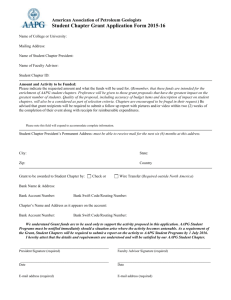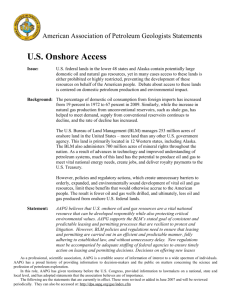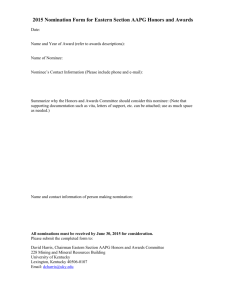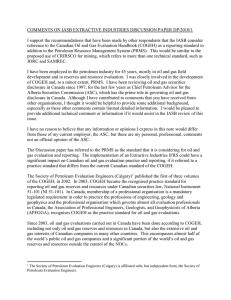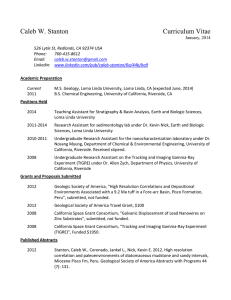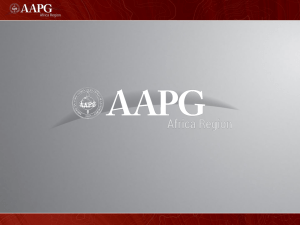AAPG Response to IASB Discussion Paper 6-21-2010.doc
advertisement
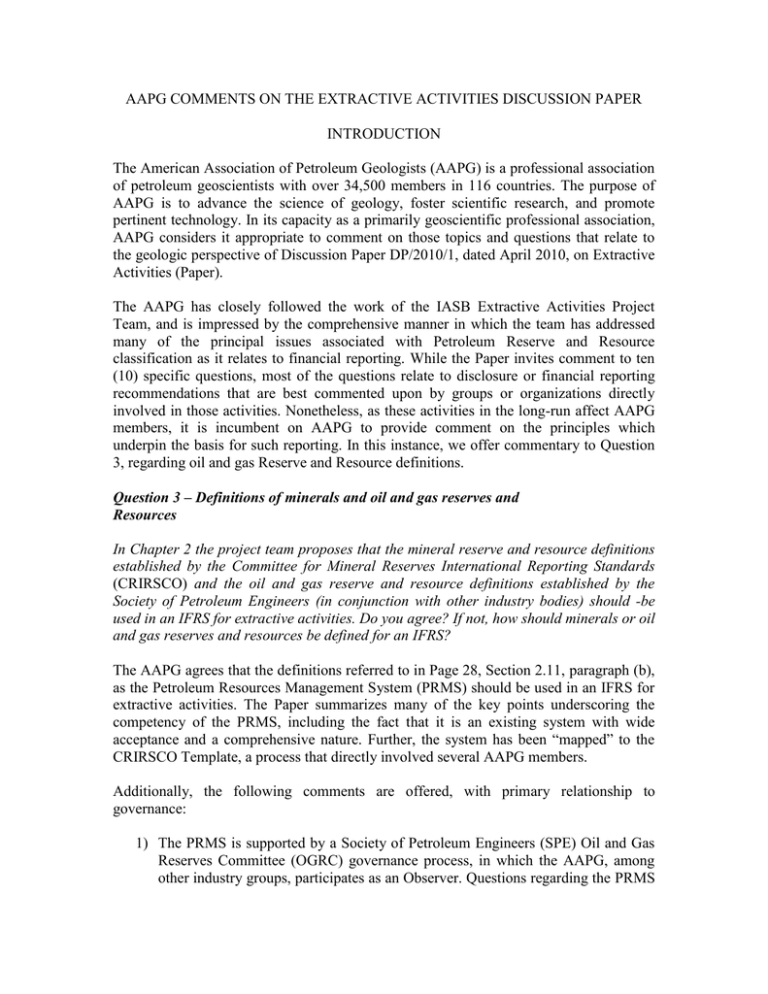
AAPG COMMENTS ON THE EXTRACTIVE ACTIVITIES DISCUSSION PAPER INTRODUCTION The American Association of Petroleum Geologists (AAPG) is a professional association of petroleum geoscientists with over 34,500 members in 116 countries. The purpose of AAPG is to advance the science of geology, foster scientific research, and promote pertinent technology. In its capacity as a primarily geoscientific professional association, AAPG considers it appropriate to comment on those topics and questions that relate to the geologic perspective of Discussion Paper DP/2010/1, dated April 2010, on Extractive Activities (Paper). The AAPG has closely followed the work of the IASB Extractive Activities Project Team, and is impressed by the comprehensive manner in which the team has addressed many of the principal issues associated with Petroleum Reserve and Resource classification as it relates to financial reporting. While the Paper invites comment to ten (10) specific questions, most of the questions relate to disclosure or financial reporting recommendations that are best commented upon by groups or organizations directly involved in those activities. Nonetheless, as these activities in the long-run affect AAPG members, it is incumbent on AAPG to provide comment on the principles which underpin the basis for such reporting. In this instance, we offer commentary to Question 3, regarding oil and gas Reserve and Resource definitions. Question 3 – Definitions of minerals and oil and gas reserves and Resources In Chapter 2 the project team proposes that the mineral reserve and resource definitions established by the Committee for Mineral Reserves International Reporting Standards (CRIRSCO) and the oil and gas reserve and resource definitions established by the Society of Petroleum Engineers (in conjunction with other industry bodies) should -be used in an IFRS for extractive activities. Do you agree? If not, how should minerals or oil and gas reserves and resources be defined for an IFRS? The AAPG agrees that the definitions referred to in Page 28, Section 2.11, paragraph (b), as the Petroleum Resources Management System (PRMS) should be used in an IFRS for extractive activities. The Paper summarizes many of the key points underscoring the competency of the PRMS, including the fact that it is an existing system with wide acceptance and a comprehensive nature. Further, the system has been “mapped” to the CRIRSCO Template, a process that directly involved several AAPG members. Additionally, the following comments are offered, with primary relationship to governance: 1) The PRMS is supported by a Society of Petroleum Engineers (SPE) Oil and Gas Reserves Committee (OGRC) governance process, in which the AAPG, among other industry groups, participates as an Observer. Questions regarding the PRMS that are passed through the Reserves Technical Interest Group (TIG) are reviewed by a subcommittee of the OGRC. The subcommittee responds to any queries which are directly related to the interpretation of the PRMS. 2) A PRMS Applications Document is in the drafting process, overseen by a subcommittee of the OGRC, designed to better describe how the PRMS should be applied. The AAPG Committee on Resource Evaluation (CORE) is actively participating in preparation of this document, with an anticipated release in late 2010. 3) The PRMS is actively being translated into languages other than English. A Spanish version has been completed, and Chinese and Russian language versions are currently in progress. 4) Mapping of the PRMS to other systems is underway, most notably that employed by the Russian Federation. Again, AAPG members are included in this process. For these reasons, the AAPG strongly considers the selection of the PRMS to be appropriate.
